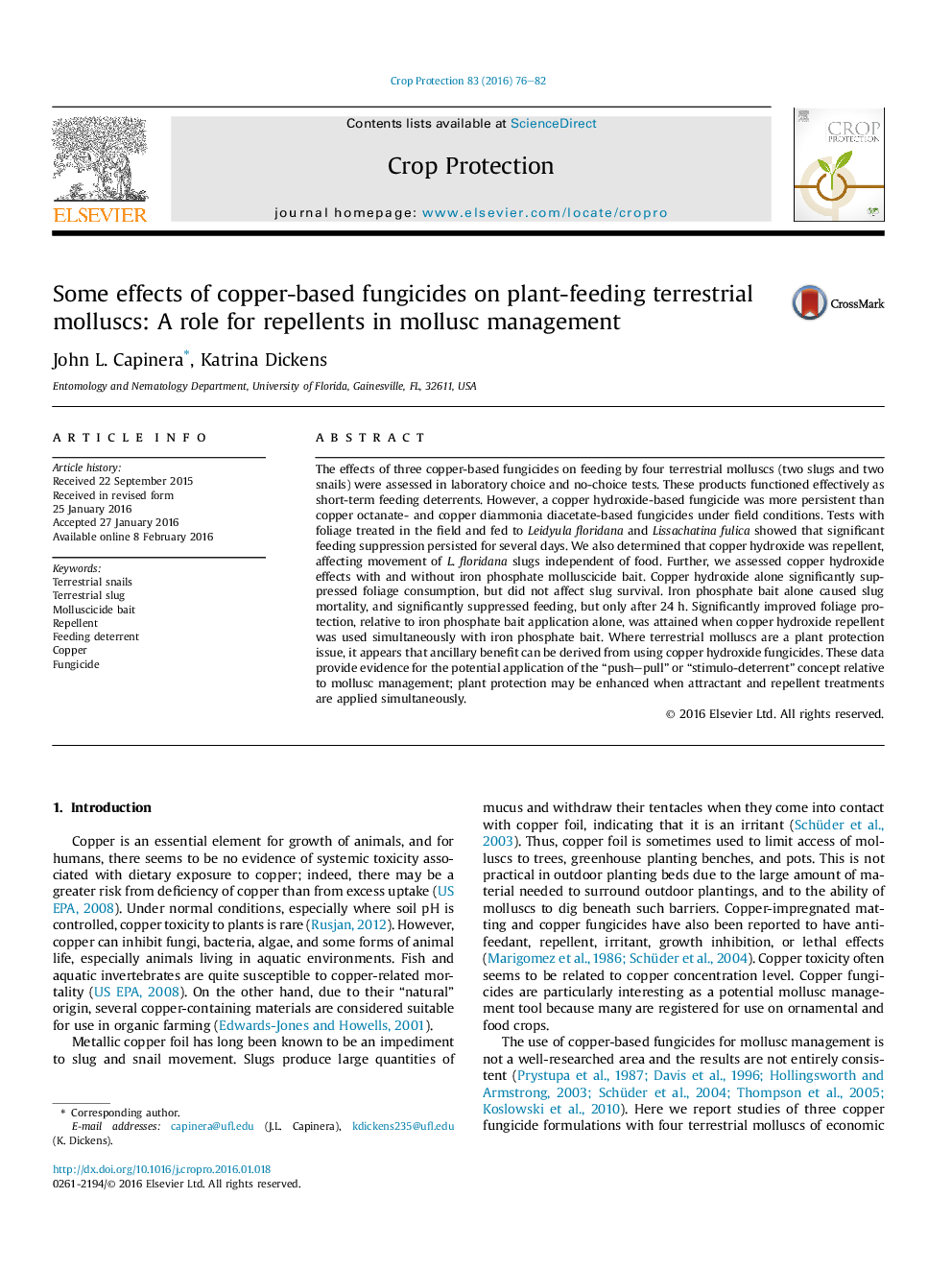| Article ID | Journal | Published Year | Pages | File Type |
|---|---|---|---|---|
| 4505598 | Crop Protection | 2016 | 7 Pages |
•Copper-based fungicides deter feeding by slugs and snails.•Copper hydroxide-based fungicide also acts as a repellent, independent of feeding.•Copper hydroxide was not toxic to slugs.•When used in conjunction with poison bait, copper hydroxide improved foliage protection.
The effects of three copper-based fungicides on feeding by four terrestrial molluscs (two slugs and two snails) were assessed in laboratory choice and no-choice tests. These products functioned effectively as short-term feeding deterrents. However, a copper hydroxide-based fungicide was more persistent than copper octanate- and copper diammonia diacetate-based fungicides under field conditions. Tests with foliage treated in the field and fed to Leidyula floridana and Lissachatina fulica showed that significant feeding suppression persisted for several days. We also determined that copper hydroxide was repellent, affecting movement of L. floridana slugs independent of food. Further, we assessed copper hydroxide effects with and without iron phosphate molluscicide bait. Copper hydroxide alone significantly suppressed foliage consumption, but did not affect slug survival. Iron phosphate bait alone caused slug mortality, and significantly suppressed feeding, but only after 24 h. Significantly improved foliage protection, relative to iron phosphate bait application alone, was attained when copper hydroxide repellent was used simultaneously with iron phosphate bait. Where terrestrial molluscs are a plant protection issue, it appears that ancillary benefit can be derived from using copper hydroxide fungicides. These data provide evidence for the potential application of the “push–pull” or “stimulo-deterrent” concept relative to mollusc management; plant protection may be enhanced when attractant and repellent treatments are applied simultaneously.
Graphical abstractFigure optionsDownload full-size imageDownload as PowerPoint slide
